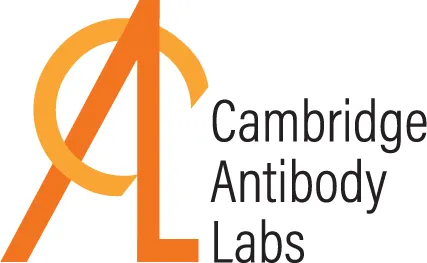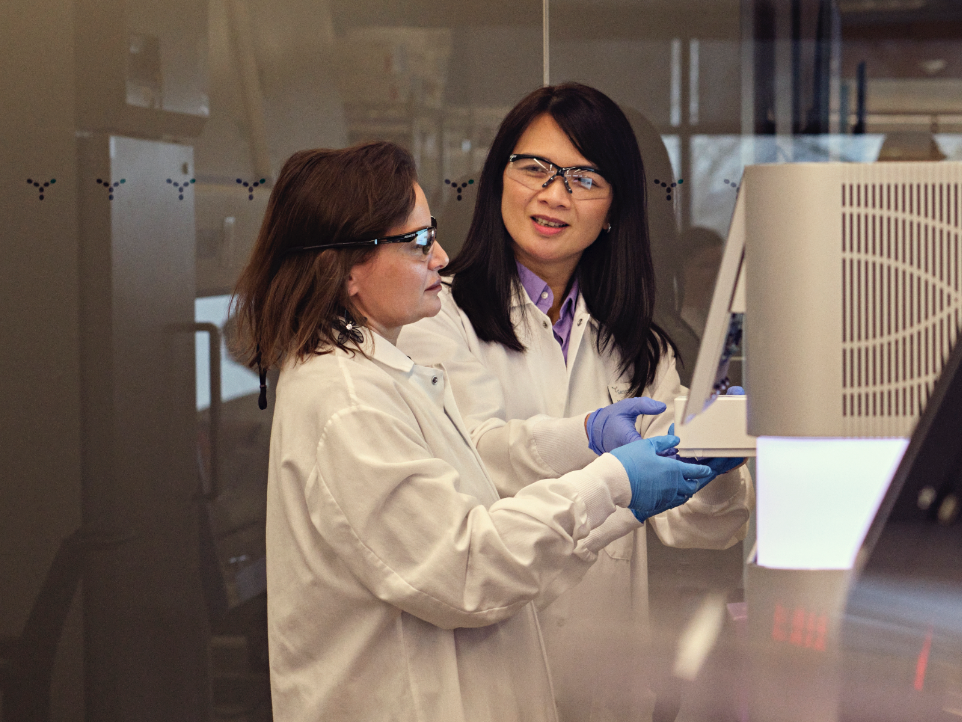
Antibody-Technology
Monoclonal Cambridge Antibody Technology used in a type of biopharmaceutical called antibody therapies aim at particular antigens—typically proteins on cell surfaces. These therapies aim to either directly modify disease processes or leverage the immune system of the body. They have transformed the therapy of many different illnesses including cancers, autoimmune diseases, and infectious ones. Antibodies can be designed to:
- Block cellular receptors
- Deliver cytotoxic agents to target cells (antibody-drug conjugates).
- Improve immune reactions.
- Block inflammatory pathways.
Field has developed quickly since the first therapeutic monoclonal antibody (muromonab-CD3) was approved in 1986, with medicines including Humira, Rituxan, and Keytruda reaching blockbuster status.
Biotechnology’s significance in contemporary medicine
Modern medicine depends significantly on biotechnology since it makes the following possible:
- Vaccines created using genetic engineering,
- Gene editing and regenerative medicine in
Cambridge Antibody Technology most commonly associated with:
- Developing the phage display method used in finding fully human antibodies.
- Helping to create adalimumab (Humira), the first entirely human monoclonal antibody medicine licensed by the FDA and among the most financially successful pharmaceuticals ever.
- Building large libraries of human antibody genes and creating screening systems to speed pharmaceutical development.
Timeline of Major Events
- Sir Greg Winter and others established Cambridge Antibody Technology in 1989.
- Early in the 1990s, CAT creates one of the first major phage display library of human antibodies.
- 1996 sees CAT make a historic deal with BASF Bioresearch Corporation.
- 2002: Adalimumab (Humira) results from cooperative effort with Abbott Laboratories.
- 2004–2006: Despite scientific achievement, CAT under financial pressure; possible buyouts are under discussion.

AstraZeneca’s acquisition and evolution into Med Immune
AstraZeneca bought CAT in 2006 to bolster its biologics and antibody discovery competencies. The purchase let AstraZeneca:
- Access CAT’s phage display method and antibody library.
- Promote its biologics pipeline.
- Boost competition in targeted bio logs and immunotherapy.
Following the purchase:
CAT’s operations were combined with Med Immune, AstraZeneca’s US- based biotechnological affiliate. The merger allowed a transatlantic biologics engine, mixing Med Immune’s developing and commercializing skills with CAT”s discovery capacity. Though the CAT brand was finally phased off, many AstraZeneca biologics now are supported by its technology and scientific legacy.
- Technical and scientific inventions
- Display Technology for Phage
Conceptualization and Mechanism
Phage display is the presentation of peptides or proteins—like antibodies—on the surface of bacteriophages, viruses that infect bacteria. In CAT’s case, human antibody fragments—typically Fv or Fab—genetically fused to a phage coat protein are shown on the viral surface. The central concept is connect genotype to phenotype: on the outside, the antibody is encased in the phage, but the DNA is encoding the antibody. This permits:
- Rapid screening of billions of variations for binding to a target antigen.
- Choosing the top binders via bio panning involves exposing the phage library to an antigen, washing away weak binders, and amplifying strong ones.
Original Research and Patents
First showing phage display in the late 1980s was Sir Greg Winter and coworkers at the MRC. CAT marketed this labor by:
- Creating substantial libraries of human antibodies.
- Creating rapid screening systems.
- Giving CAT a solid position in the biotech IP scene by locking basic patents on phage display and human antibody libraries.
- CAT’s portfolio of patents was instrumental in developing licensing agreements with major pharmaceutical firms.
Significant Licensing Agreements
| Partner | Year | Scope of Agreement | Outcome/Impact |
| Abbott Laboratories | 1993 | License and collaboration on fully human antibodies | Led to development of Humira |
| Human Genome Sciences | 1999 | Shared access to antibody libraries | Joint research projects in immune disorders |
| Pfizer (via Wyeth) | Early 2000s | Use of CAT’s display libraries for target screening | Expanded CAT’s influence in large pharma pipelines |
| Genzyme | 2000 | Development of antibody therapeutics for rare diseases | Targeted niche therapeutic areas |
| Immunex/Amgen | 1998 | Access to human antibodies for inflammatory disease targets | Bolstered Amgen’s biologics portfolio |
Impact of Partnerships on Drug Discovery
Collaborations of CAT resulted in:
- Quicker development cycles for antibody-based medicines.
- Cross-pollination of expertise combining CAT’s antibody methods with partners’ disease particular research.
- Besides helping CAT pay for its growth and operations, these collaborations supported the general industry trend toward biologics.
- They Let CAT’s inventions reach the market more quickly and become mainstay in the development plans of big pharmaceutical companies.
Adalimumab (Humira) development
Important development milestones:
- CAT isolated high-affinity human antibodies against TNF-α using its phage display technique.
- CAT helped co-develop the medication in conjunction with BASF Bioresearch Corporation and eventually Abbott.
- Abbott managed worldwide commercialization, regulatory approvals, and clinical studies.
Role of CAT in Its Discovery
- Designing and screening human antibody libraries against TNF-α.
- Isolating and refining the antibody that eventually became adalimumab.
- Supported by its phage display technology, providing essential intellectual property and scientific knowledge.
- This achievement confirmed CAT’s technology and positioned it among the few biotechnology companies to have had a fundamental part in the creation of a blockbuster medication.

Commercial and Clinical Influence
- Annual sales of more than $20 billion at its peak make this drug the most widely sold globally.
- A pillar of therapy for several autoimmune disorders.
- A financial success that improved CAT’s legacy and justified its purchase.
- CAT’s participation in Humira showed that human antibodies derived from phage displays could thrive both clinically and commercially, therefore changing the biotechnology environment.
Other Important Antibody Treatments
Although Humira was the star performer, CAT helped to or affected a number of other treatments via licensing and cooperation:
- Raxibacumab is an anti-anthrax antibody created with Human Genome Sciences and the U.S.
- CAT-354 is an IL-13 monoclonal antibody created for asthma (though never used commercially).
- Several pipeline candidates resulting from cooperation with Amgen, Genzyme, and others.
Contribution to Antibody Engineering
Humanizing antibodies
Most therapeutic antibodies were extracted from mice and had to be “humanized” to lessen immunogenicity in patients before fully human antibodies became possible. By means of its founders and partners, CAT:
- Assisted in creating techniques for grafting mouse antibody variable regions onto human frameworks.
- Improved safety and efficacy by helping to transition from chimeric to fully human antibodies in a larger effort.
- Improve this method by combining phage display with rapid development.
The process of maximizing antibody binding to its target antigen is affinity maturation. In B cells in nature, this happens; in CAT’s labs it was accomplished through:
- Antibody gene in vitro mutagenesis.
- Cycle of phage display that specifically enriched high-affinity variations.
- High-throughput screening aimed at identifying the best binders.
Antibodies with both bispecific and multi specific properties
Though CAT mainly concerned with monospecific antibodies, its platform prepared the basis for:
- Bind two distinct antigens, bispecific antibodies (e.g., redirecting immune cells to tumors).
- Multi specific constructions used in cancer, infectious disease, and autoimmunity
Business and Financial Aspects
Important points:
- Significant money from the IPO went toward financing Cambridge Antibody Technologyresearch and development activities.
- It drew institutional as well as retail investors hopeful about the therapeutic promise of monoclonal antibodies.
- CAT’s stock price fluctuated because of the lengthy timetables and great costs involved in biologics development despite scientific success.
Market performance was affected by:
- Advances of clinical candidates (e.g., Humira),
- Early 2000s general biotech industry trends.
Scientific Awards and Honors
CAT’s beginnings of internationally acknowledged basic research formed the basis for its success. Most especially, many honors went to CAT co-founder and main scientific driver Sir Gregory Winter.
| Recipient | Award | Year | Contribution Recognized |
| Sir Gregory Winter | Nobel Prize in Chemistry | 2018 | Phage display of peptides and antibodies |
| Sir Gregory Winter | Royal Society Fellowship (FRS) | 1990 | Protein engineering and antibody humanization |
| CAT (as an entity) | Queen’s Award for Enterprise in Innovation | 2004 | Excellence in biotechnology and therapeutic antibody discovery |
| Sir Gregory Winter | Royal Medal, Royal Society | 2011 | Contribution to therapeutic antibodies and translational science |
Industry Recognition
The biopharmaceutical sector, including among others, came to know Cambridge Antibody Technology well.
- Biotech conferences honoring licensing and innovation awards.
- Being listed among Europe’s most powerful biotech firms.
- High trade publication visibility in Bio Century, Nature Biotechnology, and Fierce Biotech.
- Combining platform innovation with intelligent business development, industry experts often pointed to CAT as a model for effective biotech R&D.
Donations for Nobel Prize-winning Research
- Smith—for the discovery of phage display of peptides.
- Frances Arnold for enzyme directed evolution.
- Sir Gregory Winter for therapeutic protein development and phage display of antibodies.
- CAT was instrumental in validating the clinical and commercial prospects of this technology by bringing it commercially into use.
- Though CAT as a corporation did not win the award, their commercial phage display execution was essential to this Nobel-winning research.
Effect on Drug Development and Biotechnology
Antibody Therapeutic Industry Influences
- CAT fundamentally changed the sector for antibody therapeutics.
- Proved that in vitro approaches may be used effectively to develop totally human antibodies.
- Developed antibody drug discovery systems that are now industry norms.
- Helped change pharmaceutical R&D emphasis toward biologics, which fueled the development of antibody-based treatments in immunology, oncology, and beyond.
- Through helping adalimumab to be successful, Cambridge Antibody Technology showed the clinical and commercial superiority of human monoclonal antibodies over traditional small molecules in specific disease fields.
Role in Shaping Biopharma Research and Development Methods
- Emphasis on automation and high-throughput screening shaped the design of antibody discovery processes.
- Validated the platform model in biotechnology, whereby a technology (like phage display) can be applied across several products and collaborations.
- AstraZeneca, Amgen, and Novartis among other big pharmaceutical corporations altered these techniques internally or through collaborations, so influencing worldwide R&D plan around Cambridge Antibody Technology discoveries.

Training and Legacy in Scientific Talent
- Lead other biotech companies discovered.
- Rise become top academic, pharmaceutical company senior scientists.
- Mentor, invest, and help to incubate startups in the Cambridge biotech ecosystem.
Issues and Arguments
Legal Matters and Patent Conflicts
Being a company using modern biotechnology, CAT participated in multiple intellectual property (IP) conflicts, mostly involving phage display technology. Among the main difficulties were:
- Companies employing related antibody discovery methods arguing over licensing conditions and patent breadth.
- Legal conflicts with rivals over ownership of human antibody libraries and the rights to derived therapeutic molecules.
- Royalty payment concerns with Abbott Laboratories (later AbbVie) regarding adalimumab (Humira) resulted in drawn-out negotiations.
- Notwithstanding these difficulties, CAT was able to safeguard its main intellectual property and profit from settlement agreements and licensing.
- Traditional immunologists and doctors who preferred CAT’s scientific methods—in particular in vitro antibody discovery employing phage display—occasionally questioned their validity.
- Mouse model or hybridoma in vivo approaches.
Legacy and Future Viewpoint
- Integration into AstraZeneca
- Following AstraZeneca’s purchase of CAT in 2006, the business was:
- Med Immune, AstraZeneca’s biologics division, included
- The main components of AZ’s antibody research and development were its libraries, scientists, and platforms.
- CAT’s Cambridge site continued to be a vital creative center housing important research projects in cancer and immunology.
Ongoing Influence in Biopharmaceutical Innovation
CAT left a legacy that shows itself in several ways:
- Many approved and experimental antibody medications make use of its technologies and patents.
- Many ex-CAT scientists are now in executive positions throughout biotechnology and pharmaceuticals.
- Modern biotech companies still find a blueprint in its strategy to antibody discovery and platform licensing.
- Moreover, CAT’s impact is clear in the growing supremacy of biologics in worldwide pharmaceutical pipelines, especially for cancer, autoimmune, and infectious disorders.
The future of antibody discovery systems
- AI and machine learning combined with next-generation phage display
- Alternative presentation methods include yeast, mammalian, ribosome display.
- Novo protein engineering and in silico antibody design.
- Targeting sophisticated disorders using bispecific, trispecific, and multifunctional antibodies.
- Personalized antibody treatments based on patient-derived B-cell repertoires.
- Foundational work in library building, selection, and optimization by Cambridge Antibody Technology informs upcoming-generation methods.
Summary of Contributions from CAT
Discovery of human antibodies using phage display. Developing Humira, the first completely human monoclonal antibody medication. Creating a platform-centric biotechnology model based on partnerships and licensing.
Helping advances in biologics scientific, commercial, and clinical. Its advances have assisted in driving a paradigm change in drug development from small molecules to targeted biological therapies. Antibody therapies’ widespread use in contemporary medicine. Nobel Prize-winning research based on Cambridge Antibody Technology technological foundations. Cambridge’s transformation into a center for biotech innovation. Antibody-based medications’ continuing popularity in treating rare diseases, autoimmunity, and cancer.
Read more about Tech News on Technospheres.







The advancements in antibody technology since 1986 are truly remarkable, especially with blockbuster drugs like Humira and Keytruda transforming modern medicine. The acquisition of Cambridge Antibody Technology (CAT) by AstraZeneca in 2006 seems like a strategic masterstroke, combining CAT’s discovery capabilities with MedImmune’s development and commercialization skills. Phage display, pioneered by Sir Greg Winter, is a fascinating technique that bridges genotype and phenotype, enabling the presentation of human antibody fragments on bacteriophages. It’s impressive how CAT’s legacy continues to influence AstraZeneca’s biologics pipeline, even though the CAT brand itself has been phased out. The fact that most therapeutic antibodies had to be “humanized” initially highlights the complexity of reducing immunogenicity in patients.